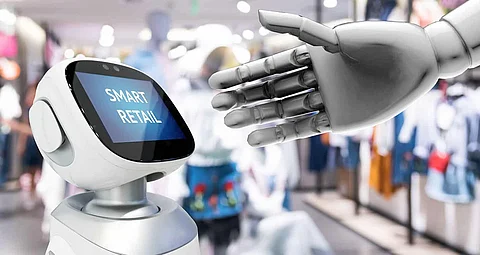

Keeping up with ever-demanding customers and fierce competition requires setting eyes on tiniest details. Customers were never so picky, but we cannot judge in the times of abundant choices – we have to adapt. When it comes to retail business, apart from offering a high-quality product, customers are seeking for enhanced customer experience, and that's the aspect that makes a whole difference. Did you know that artificial intelligence (AI) in the retail business was valued at $650 million in 2017., and the predictions show the rapid growth of around 40% until 2024.?
Keep reading as we're going to talk about the ways AI can improve the performance, productivity, and ROI of your retail business.
No being able to satisfy demanding customers can potentially lead to negative business results such as higher inventory costs or losing the customers due to not having the item on demand. AI comes in handy when we are talking about demand forecasting, as the system can effectively predict demand for certain products at a specific time.
It doesn't only help with supply optimization and production planning, but also decreases unnecessary inventory costs, increases customer's satisfaction, and helps businesses to plan logistics and marketing budget accordingly. There are various qualitative and quantitative methods for effective demand forecasting, but it usually demands experienced and skilled professionals that increase costs.
With the help of AI, you can quickly and cost-effectively, get a precise and detailed demand forecast for various products based on historical data and customer's behavior.
Dynamic pricing is another aspect where AI can give your retail business a competitive edge. For instance, while determining the price for a particular product, you have to take into account the fixed and dynamic factors. Logistics and manufacturing costs fall under fixed costs that rarely change, so it's easy to predict those.
On the other hand, dynamic factors are more sophisticated to predicts as these tend to be connected with socio-economic, geographical, and environmental factors. With behavioral data and an effective demand forecasting process, you can easily set your prices dynamically to increase profitability, revenue, and efficiency of inventory management.
A current Coronavirus outbreak shows an example of morally and legally questionable, dynamic pricing due to the high surge of demand caused by an epidemic virus. Similar examples can be found with services like Uber which change prices according to weather conditions.
Kiosk or a digital station around the stores is a practical approach for enhancing customer experience by providing accurate information that helps in conversions. As technology advances, AI becomes 'smarter', especially when it comes to recognizing data patterns, human behavior, and even emotions.
For instance, you can imagine AI-powered devices that serve as an information station that studies and recognizes customer behavior. That way, the tool can help in providing accurate product suggestions, recommendations, and appropriate support for each customer.
Shift scheduling is a time-consuming process that simply has to be done. Scheduling is a very complicated process, even if you run a small retail store. For instance, you have to take into account your staff availability, vacation time and sick leave, priorities, and budgets, so it's not a surprise that creating a perfect schedule is a tough process.
With the help of AI, you can tremendously decrease the time needed for creating a fitting schedule, which gives you additional resources to steer on other critical parts of your business. Auto-scheduling is a 'smart' tool that automatically creates an efficient schedule for your business in a matter of a single click. Since the tool doesn't work alone but is connected to other departments, it gives you an accurate labor forecast prediction that saves time and money.
A shopping experience in retail stores shouldn't be complicated, but rather a friendly and easy-to-navigate process. Image recognition is still in its early stages, but it's one of the most developing areas of AI. The visual assistant has the primary purpose of helping customers to find a product they are looking for or provide an alternative suggestion.
For instance, customers can show a photo of a specific product to AI-powered stations, and the system returns an exact location of a product in the store along with other crucial information.
Another handy way to utilize the power of AI is by implementing voice assistants around the store, such as Siri or Alexa. Voice assistants can directly help customers and increase customer satisfaction and revenue.
Providing an excellent customer experience is one of the fundamental aspects of being competitive. As customers are getting more demanding, AI will slowly become a crucial part of retail businesses because it can dramatically increase customer's experience while cutting the costs and increasing the revenue.
Adam Ross
General Manager of AMERICAS at Deputy
Adam Ross spearheads the Americas division for Deputy, a global workforce management platform for employee scheduling, timesheets and communication. Previously a securities lawyer, Adam manages scaling Deputy's software for users in over 200,000 workplaces around the world. A seasoned leader in the technology space, Adam previously directed strategic partnerships, product development, and growth across global brands such as Apple, Box, NASDAQ and Bloomberg.
Join our WhatsApp Channel to get the latest news, exclusives and videos on WhatsApp
_____________
Disclaimer: Analytics Insight does not provide financial advice or guidance. Also note that the cryptocurrencies mentioned/listed on the website could potentially be scams, i.e. designed to induce you to invest financial resources that may be lost forever and not be recoverable once investments are made. You are responsible for conducting your own research (DYOR) before making any investments. Read more here.
